

CDN PUB Agreement # 40012883


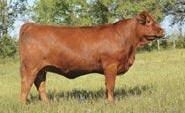


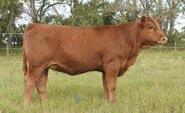

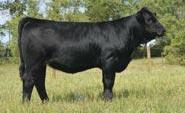
Flush

Page 4 • Fall 2022 • Gelbvieh guide
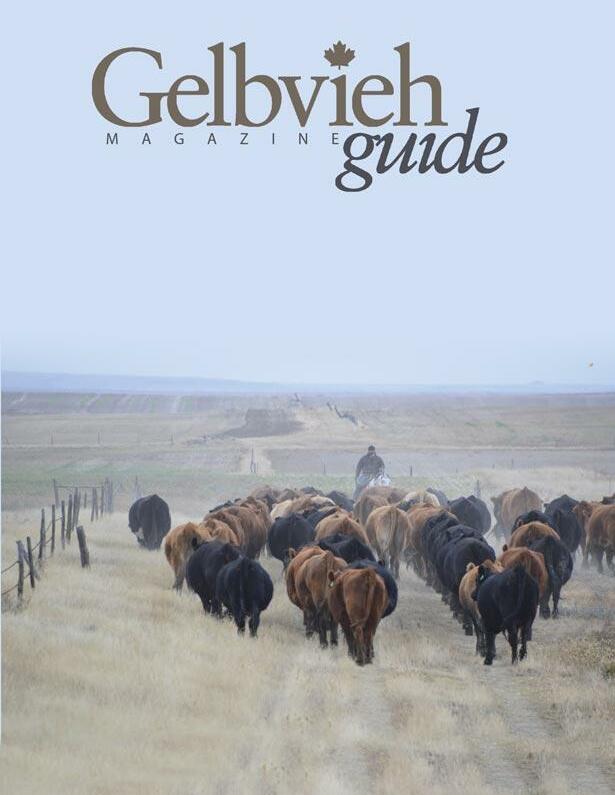


FALL 2022 • VOLUME 32 • ISSUE 3 Advertising Deadlines/ Publication Dates Spring - January 1 / February 1 - Herd Sire Issue Summer - May 1 / June 1 - Member Directory Fall - September 1 / October 1 - Commercial Issue The official publication of the CANADIAN GELBVIEH ASSOCIATION 5160 Skyline Way N.E., Calgary, Alberta T2E 6V1 Phone: (403) 250-8640 Fax: (403) 291-5624 Email: gelbvieh@gelbvieh.ca www.gelbvieh.ca In this issue... President’s Report 8 Office Memo 9 Gelbvieh Association of AB/BC News 11 Man/Sask Gelbvieh Assoc. News 12 Coming Events 48 Advertiser Index 49 Feature articles... CGA 2022 Scholarship Winner 14 Lice Treatments in the Fall 16 Families that Farm Together Stay Together 18 The Power of Genetic Recombination 24 CGA Hall of Fame 28 Preconditioning and Backgrounding Calves 37 2022 Dam of Merit & Dam of Distintion Awards 42 Mama cows at Lonesome Dove Ranch are ready to come in off fall grazing Gelbvieh guide • Fall 2022 • Page 5
CANADIAN GELBVIEH
Directors
President James Jasper Box 24 Hartney, MB R0M 0X0
Phone: 431-740-5443 jsjasper2007@gmail.com
Vice President Bev Milne Box 1573 Fairview, AB Phone: 780-835-2645 milneranch@live.ca
Cody Girling 515 - 6 Avenue Dunmore, AB T1B 0J9 403-928-1923
Don Okell Box 627 Duchess, AB T0J 0Z0
Phone: 403-378-4898 Fax: 403-378-4894 jenty@eidnet.org
Eddie Marsman
25032 Twp. Rd. 274, Red Deer County, AB T0M 0V0 403-588-1400 eddie@ hillsdowncontractingltd.onmicrosoft.com
Cody Congdon Box 366, Bashaw, AB T0B 0H0 403-350-5791 rockytopgelbvieh@hotmail.com
Kirk Hurlburt Box 3, Site 206, RR 2 Saskatoon, SK S7K 3J5 306-222-8210 hurlburtlivestock@sasktel.net
Provincial Association Representatives to the CGA Board of Directors
Gelbvieh Association of Alberta/BC
President - Darrell Hickman RR#1 Sundre, AB T0M 1X0 780-581-4510 darrell.ddhickman@gmail.com
Secretary: Olivia Koziak RR 1, Starr, AB T0B 4E0 780-835-0264 olivia.koziak@outlook.com
Man-Sask Gelbvieh Association
Representative - Cynthia Wirgau Box 25 Narcisse, MB R0C 2H0 204.278.3255 maplegrovegelbvieh@gmail.com
President - Ian Thackeray Box 1002 Weyburn, SK S4H 2L0 306-861-7687 tgfis@sasktel.net
Don’t Miss Out!
Keep in touch by reading the official Gelbvieh Magazine.
The Gelbvieh Guide magazine is mailed FREE OF CHARGE for four years to pur chasers of registered Gelbvieh cattle when the registration certificate is transferred into the purchaser's name. Ask the seller of the animal for a registration certificate when you purchase a Gelbvieh animal.
Note, according to the Animal Pedigree Act (Chapter 13, Section 64(j), no per son shall sell a purebred animal without providing to the buyer, within six (6) months after the sale, the animal's duly transferred certificate of registration.
If you are not a CGA member and wish to continue to receive the GELBVIEH GUIDE or know of someone who should be on our mailing list, please clip out and send in this coupon and remit $26.25 Canadian and send to the Canadian Gelbvieh Association office.. For out of country subscribers, please fill out the Subscription Form, remit $50.00 Canadian, and send to the Canadian Gelbvieh Association of fice.
Name: Address: City: Prov/State Postal Code Country Mail to: Canadian Gelbvieh Association 5160 Skyline Way NE T2E 6V1
Ph: (403) 250-8640 Fax: (403) 291-5624 $26.25 Enclosed for Canadian subscription fee. $50.00 Enclosed for foreign subscription fee.
ASSOCIATION performance production profit
Page 6 • Fall 2022 • Gelbvieh guide

Gelbvieh guide • Fall 2022 • Page 7
Anothersummer is wrapping up and we are moving into fall. From conversations with other members, haying is done, and most are over the hump with harvest. For many it is time to pivot back to the herd. Whether it is weaning and making replacement and bull pen selections or dusting off the show equipment, there is always something that needs your attention. I hope that all of you still found the time to do something fun with the kids, grandkids, or significant other this summer.
This fall is shaping up nicely as cattle markets continue to be strong. Cull prices should have many producers looking to trade in the old bull for some fresh genetics. I also feel many will be looking for replacements due to having to sell off in 2021.

This fall is also shaping up nicely for the fall show run. There are many events to showcase your animals. Be aware if you plan to attend events, the order has changed a little this year, due to the greatest CFL team in the league hosting the Grey Cup this year. The Canadian Bull Futurity will fall between Farmfair and Agri bition due to the Grey Cup dates. Please do not forget the 50th anniversary celebrations that will be held during Agribition week. Really looking forward to seeing everyone there. REPORT James Jasper the Anniversary during

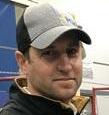
Page 8 • Fall 2022 • Gelbvieh guide
CGA PRESIDENT’S
Don’t forget
50th
Celebrations that will be held
Agribition week. Looking forward to seeing everyone there!
CGA OFFICE MEMO Sarah Van Schothorst CEO
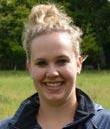
TheFall Show and Sale season is approaching and DNA has already been coming in steady. Please re member that the turnaround time for DNA testing is 21 days from when the sample arrives at the lab. However in some situations samples may need to be re-processed or if sam ple quality is an issue the lab may need another one. This can all contribute to delays so getting it done early is essential. TSU supply shortages have come to an end. The office is fully stocked so you can contact the CGA for any TSU supplies you may need.
We have also had DNA requests coming in for the Female Foundation project. Any female being DNA’d is eligible to be enrolled. Females can get the 100K DNA test completed for $20. When making your DNA requests in Digital Beef you can check off the box for Female Foundation. If you would also like horned/polled or coat color tests please also check off these boxes and combo pricing will still apply. This is to encourage members to DNA as much of their cow herd as possible over the next 3 to 4 years. Thank you to Neogen Canada for part nering with the CGA to get these high density genotypes done at a reduced rate! The CGA is working to secure funding for docility scoring, foot & leg scoring, and reproductive efficiency data collection. Females enrolled through DNA tests will have this opportunity in the years to come. If you have any questions about this please contact the office.
50th Anniversary belt buckles are available through the CGA office. These are limited edition numbered 1 through 50. Number 1 and 50 will be auctioned off at the banquet in Regina on December 1. Many numbers have already been claimed so contact the office to get yours.
The Canadian Junior Gelbvieh Association hosted it’s Na tional Junior Show in Stettler, AB from July 21-24. It was a fan tastic event with 42 kids in attendance ranging in age from 18 months to 21 years old. Thank you to the organizing committee that put in a lot of time to ensure it was a successful event with fantastic prizes and activities organized for the kids.
Junior Organizing Committee (left to right): Darrell Hickman, Jessica Pearson, Olivia Koziak, Joe Bar nett, Krista An derson, Aaron Birch.
The Juniors held a meeting and a new Canadian Junior Gelbvieh Association was elected with two adult advisors also elected.
Following the National Junior Show a 50th Anniversary banquet was held celebrating 50 years of Gelbvieh in Canada. Presentations were made to some of the past presidents; Darrell Hickman, Ron Anderson, Byron Palmer and some of the Hall of Fame Inductions in 2022; Ron & Gail Anderson, Byron Palmer, Steve & Vera Denecky and Diane Panrucker. A special presentation was also made to Gail Anderson for her extensive contribution to the planning of CGA 50th Anniversary events, promotion, and her passion and dedication for the Gelbvieh breed which is displayed in the success of the CGA 50th Anni versary History book! Thank you to Chad and Olivia Koziak, Koziak Land & Cattle for their donation of banquet dec orations. Thank you to Bar GR Gelbvieh for donating the bal loon arch.
CGA President James Jasper pre senting Gail Anderson with a print for her passion and dedication to the Gelbvieh breed, going above and beyond to ensure the CGA 50th Anniversary History book was a comprehensive publication. History books are available to be purchased through the CGA office.

The CGA will be hosting another 50th Anniversary banquet celebration the week of Agribition in Regina, SK on December 1st. The banquet will be held at the Royal Hotel Regina Trade mark Collection by Wyndham with a beef tenderloin supper. The banquet tickets are $50 and can be purchased from the CGA. A room block of 50 rooms has been reserved at a rate of $119/night until October 30th. An email has been sent with a link to book online or you can call the hotel directly. Please make sure to book early.
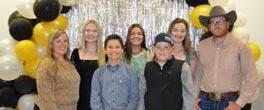
Good luck to everyone throughout the fall show and sale season. Hoping everyone has high weaning weights going into fall. Congratulations to all the Gelbvieh breeders, past and pres ent on 50 years in Canada!
 Jessica Pearson (AB/BC adult advisor), Ruby Fehlauer, Colby Hollman (Treasurer), Aspen Blake, Cameron Davidson, Avary Hickman (President), Braylen Blake (ManSask adult advisor).
Jessica Pearson (AB/BC adult advisor), Ruby Fehlauer, Colby Hollman (Treasurer), Aspen Blake, Cameron Davidson, Avary Hickman (President), Braylen Blake (ManSask adult advisor).
Gelbvieh guide • Fall 2022 • Page 9
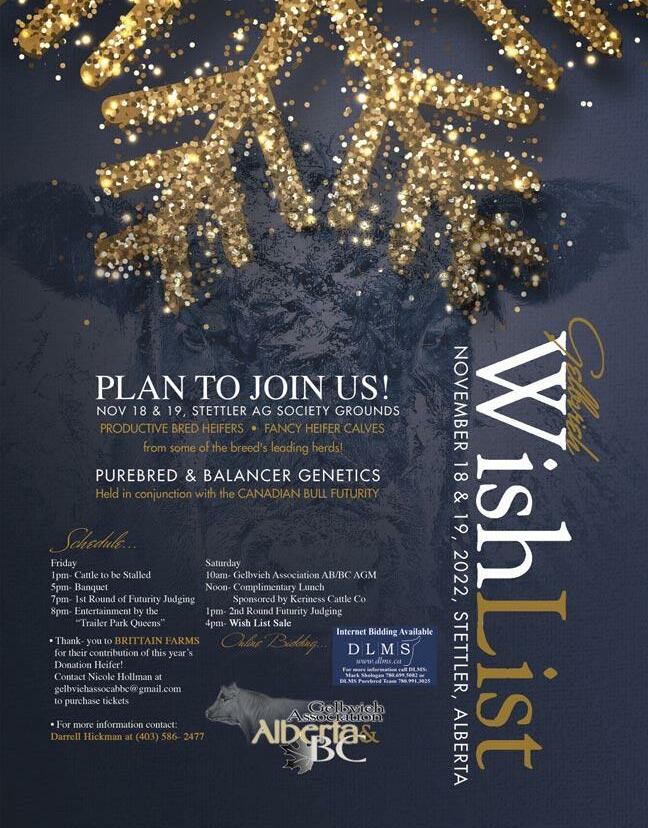
Page 10 • Fall 2022 • Gelbvieh guide
Association News
By Darrel Hickman, President
AsI reflect on 2022, and the year it has been thus far, I can’t help but have an immense sense of pride and re spect. It came in with an immense set of challenges on our pocketbooks, and our person as a whole. The drought brought most of us to realization how fragile things actually are, to evaluate our expenses and find ways to do things differently and hold on to as much as possible. Across most of our two prov inces, the rain came to help if not turn things totally around de pending upon the area. As summer progressed, the cows that are still here are doing the job and much like ourselves have earned that right. I can’t help but think our herds are stronger on this side of the last 2 years, and the engagement and support displayed by our fellow breeders through 2022 speaks to this same tone. As breeders, you have stepped up and supported via donations, purchases and endless time donated to the betterment of our breed and young producers. As I reflect on the huge success of the Junior show and 50th Anniversary celebrations held in Stet tler, I know those that came before us are also feeling the same
pride and level of respect for the direction we are headed and the progress that has been made in fifty years. I congratulate each of you, and thank you for everything it took to pull that off and sup port the juniors and Hall of Fame inductees as it was a first class event!
Looking ahead, this Fall is shaping up to continue the same level of progress and support. We have a great set of cattle com ing together for Farmfair and record lots for the Wish List mid November. Both events will no doubt be enjoyable to attend and network with our fellow breeders! Once again, the Junior Incen tive is coming to the forefront with an increased number of en tries, and supporters who have graciously stepped up to continue to support our greatest asset, the juniors! The bull futurity is also creating an immense amount of interest, and is an event not to be missed as several herdsires are found through this opportunity. I highly encourage you to make plans and become involved in the events being carried out, you won’t regret it!!
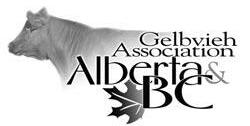

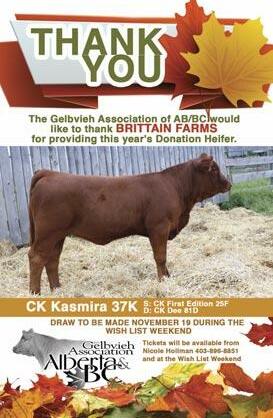
Gelbvieh guide • Fall 2022 • Page 11
Association News
By Cynthia Wirgau
Ihope
everyone had a great summer. It sure flew by quickly. This summer we had the opportunity to gather in Stettler, Alberta, to attend the Canadian Junior show and 50th An niversary celebrations. Congratulations to all the organizing com mittee on a job well done. The Man-Sask Gelbvieh Association held a field day this summer. Thank you, Neil and Deanne and family, for hosting. The day was spent listening to a speaker, checking pastures and fields, and enjoying a delicious supper. Please read the field day report from the Overby’s.
As everyone is busy preparing for the fall shows and sales, we remind you to let Cynthia know if you want to sponsor a class this year. Shows will be held at Ag Ex and the National Show and Sale at Agribition. Deadline for entries is October 1, 2022.
Anyone interested in purchasing a Sweetheart membership, please contact Cynthia Wirgau (204-886-7683) or Maureen Tub man (306-730-7822) as soon as possible. Tokens this year are ¼ zipped sweatshirts. This year sale heifers will not have to pay the $100 Sweetheart nomination fee, but you must have a member ship. The exhibitor of the animal selected will win 90% of the pot. Be sure to read the ad, and get your females entered.
This year we sponsored a variety of Junior shows including Saskatoon, Yorkton, Ogema Classic, Manitoba Youth Beef Roundup and Swift Current. 28 tokens were mailed out to 4-H members. The hoodies were appreciated by all. We appreciate the pictures we received from 4-H members showcasing Gelbvieh influenced animals. Congratulations to all the members on their accomplishments.
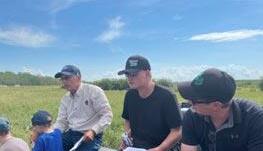
It is time to start thinking about nominations for the Purebred and Commercial Breeder of the Year Awards. Please submit your nominations to Brett Spray (spraykd@gmail.com) or Ryan Za linko (zalinko.ryan@gmail.com) by October 15.
We would also like to thank Overby Stock Farm for donating this year’s donation heifer. Be sure to get your tickets for a chance to win this heifer. The draw will be made after the National Sale at Agribition on December 1. Tickets are $10 each.
Please mark your calendar and join us at the AGM on De cember 10 in Moose Jaw at noon.


The Man-Sask Association hopes everyone has a Happy Har vest and hopes to see you all down the road at a show or sale barn. Let’s grab a coffee, or cold beverage and discuss Gelbvieh!


Page 12 • Fall 2022 • Gelbvieh guide
Thursday December 1, 2022 at 8:00am to 10:00am, Regina, Saskatchewan
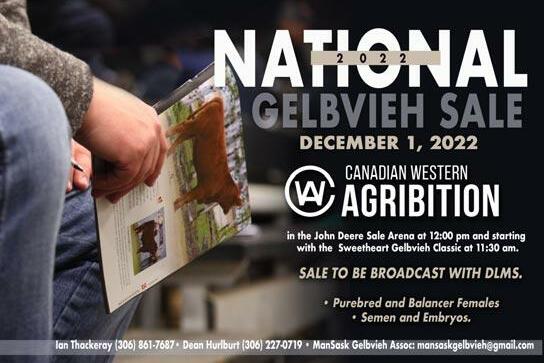
We have booked Meeting Room 2 on the Canadian Western Agribition Grounds, Regina, SK. The meeting will also be online for those unable to attend in person. The office will be in touch with these details. We have reserved a block of 70 rooms at the Royal Executive Hotel by Wyndam. The room rate is $119/night including daily breakfast.
• 50 of these check in November 30 and check out December 2 • 20 of these check in beginning of the week and check out end of the week
1The CGA Constitution may be amended at any General meeting of the Association by affirma tive vote of two-thirds of the members present, but no amendment shall be valid until approved by the Minister of Agriculture of Canada and filed at the Department of Agriculture of Canada.
Notice of all proposed amendments shall be signed by two members in good standing and submitted to the Association at least forty five days in advance of a General Meeting and they shall be included in the Notice calling such meeting, otherwise the meeting shall have no power to deal with the same.

The Meeting has only power to deal with the Article and selection as stated in the Notice cal ling such Meeting.
Members wishing to submit amendments to the Constitution are requested to forward some to the Association in accordance with the above.
Please include addressed of mover and seconder. All amendments to the Constitution must reach the Association office by Oct. 16, 2022 in order to be included in the Notice of Meeting.
Copies of the Constitution are available from the CGA office on request.
Gelbvieh guide • Fall 2022 • Page 13
2 3
Thecattle industry and more specifically, the Gelbvieh cattle industry formed me into the person that I am today. I, Aspen Blake, am a nineteen-year-old purebred cattle en thusiast and did not have a real love for cattle until 2014 when I became a 4-H member and began to attend junior livestock shows. Through showing cattle, I met many great people who mentored me and allowed me the time to learn and practice. This built my perspective of the Gelbvieh community positively over the years that I have been involved. I began putting time into our Gelbvieh/Angus commercial herd and re alized that the cross between these breeds is truly impeccable. I have been competitive with Gelbvieh-influenced steers for all my eight years in 4-H. My most recent steer was a twin who fin ished at 1425 pounds.

Aside from the commercial cattle, my family also has a small purebred Gelbvieh herd. The people who helped us build this herd are some of the most generous, hardworking, and honourable people I have ever met. I look up to them as I continue to strive for success in the cat tle industry. We enjoy breeding a few of our pure bred Gelbvieh cattle to top-end Angus AI sires, producing the most eye-catching calves on the ranch. When looking at a Balancer female, you will be blown away by the amount of carcass the animal has, while still holding on to the feminin ity necessary in productive dams. The cow that I have been showing the last two years is 75% Gelbvieh and has turned out to be a fantastic fe male, raising a potentially even better heifer calf. We have showcased our genetics at Canadian Western Agribition and plan to continue to attend these high-caliber competitions.
The number of people associated with the Gelbvieh community is smaller than many other breeds, making it extra special to be a part of. I am proud to inform fellow producers about the Gelbvieh breed and show off my own Gelbvieh influenced animals in shows across Al berta and Saskatchewan. By showing the cattle we raise, juniors can shine some light on the breed. I will continue to give back to the breed by improv ing my knowledge of Gelbvieh genetics through out many years to come as well as participate in organizing events for juniors as I age out of the junior program.
Page 14 • Fall 2022 • Gelbvieh guide
$400 MEMBERSHIP
Provides the member with one voting card, the chance to win their pick of the Futurity Bulls and draw down prizes. Draw down prizes will include but will not be limited to cash value vouchers to purchase animals from any Bull Futurity Member either privately or from a sale.
$200 PER BULL ENTRY FEE
Only Futurity Members are eligible to enter bulls.
RULES
• Futurity Entries must be born on or after January 1st of the previous year (2021).
• Bulls will only be allowed to enter the Futurity once.
• Futurity Member must be the registered owner of their Futurity Entries by August 1 of the current year.
• All entries must be CGA or AGA registered PC88, Purebred or Fullblood
• All Futurity Entries must be virgin bulls and not have had semen collected.
• All entries must have a minimum of complete SNP parent verification on file (both parents) with the CGA or AGA by Monday November 14th, 2022. 100K, polled and color DNA testing is up to the discretion of the Futurity Member but is recommended.
• All bulls will be tattoo checked and weighed at the event.
• All bulls must have videos taken before the Futurity that can be made available on-line."
• The Bull Futurity Entries may be cataloged in conjunction with the Wish List Sale catalog. Entry deadline to be included in the catalog is October 1st. Late entries and substitutions can be made up until November 14th.
• The Bull Futurity will provide a stall card that must be displayed. All other promotional signage is at the discretion of the Futurity Members.
• On-Line voting will be available for Futurity Members who are unable to attend the event, there will be no proxy voting.
• The Futurity Entry that receives the most votes will be named the Bull Futurity Champion.
• The last name to be drawn will be the Draw Winner and have their choice of the Futurity Entries. This bull will be the Selected Futurity Bull.
• The Draw Winner is not eligible to choose their own bull.
• The Bull Futurity Committee has the discretion to assign pay out amounts to each of the winners and other prizes.
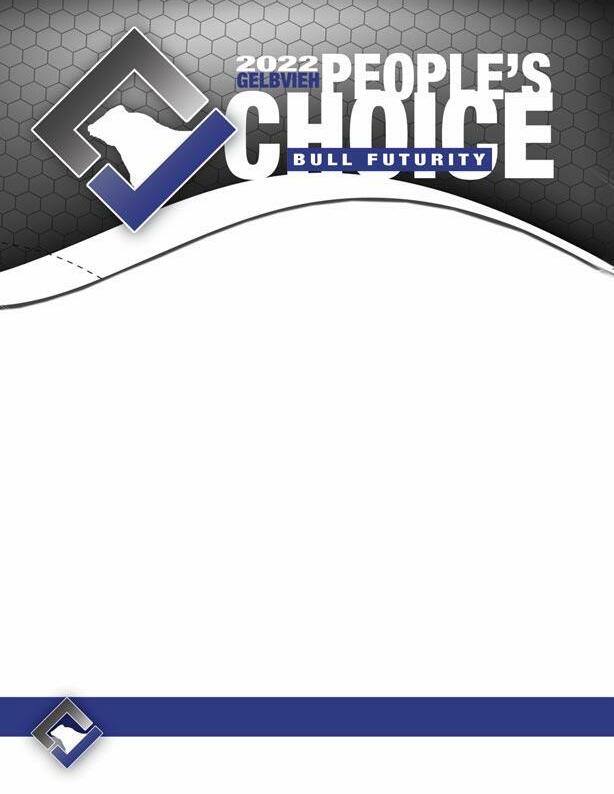
• Full ownership of the Selected Futurity Bull is assumed by the Draw Winner and the prize money paid to the owner of the Selected Futurity Bull when the bull passes a breeding soundness evaluation or if the Draw Winner chooses to take ownership before that. Until ownership is assumed the care of the Selected Futurity Bull is the responsibility of the owner.
• The owner of the Selected Futurity Bull Champion may draw in herd semen. They may not sell this semen or use it to breed cows they do not own.
• Purchase of insurance of the Selected Futurity Bull is up to the discretion and/or responsibility of either the owner of the Selected Futurity Bull or the Draw Winner.
• The Draw Winner has the option to sell the Selected Futurity Bull any time after they take ownership. Aaron Birch - Ph: 403-485-5518
For further information contact:
• aaron@tbfarms.ca
NOVEMBER 18-19, 2022 STETTLER AG SOCIETY, STETTLER, AB TO BE HELD IN CONJUNCTION WITH THE GELBVIEH WISH LIST SALE Gelbvieh guide • Fall 2022 • Page 15
LICE
FALL TREATMENTS in the
There has been lots of talk and questions from producers and large animal veteri narians regarding the strategy to get better effective lice and internal parasite control. Espe cially in the last couple years across western Canada there has been a large increase in lice issues espe cially sucking lice. With increasing lice detection producers are searching to find a new strategy that is effective yet doesn’t involve running cattle through the chute. I hope this article may give you several options.
We know lice prefer the cooler temperatures of fall and winter to multiply and be evident and seen on the common locations of cattle. We also know how quickly in the spring lice can transfer to the calves and cause the irritation and blood loss to calves trying to nurse and grow. Timing of treat ment has improved our results. Over time I believe we have gotten away from the very late fall and winter treatment. Cattle if processed early in the fall when temperature were often warm were treated out of convenience and we seemed to get away with it because of the residual properties of the ivermec tin type products. On the flip side the freezing rate on these products is slightly below minus 10 degrees so applying slush affects absorption and perhaps ef ficacy. All things to consider when applying pour on products such as the macrocyclic lactones. Re searchers are checking into an actual resistance de veloping but it is appearing that is possibly the case. One improvement will be to get the timing right moving from late summer or early fall treatment to late fall should improve things somewhat. This should apply to feedlot cattle as well so maybe summer placed cattle need to be lice treated at first implant as an example. More to keep track of from a management perspective.
 By Roy Lewis DVM
By Roy Lewis DVM
Alternate products such as the Group 3 insecti cides with names such as Boss, Saber, De-Lice or Cylence can be used effectively. Again timing is crit ical and they are all pour on products with slight differences is formulation. Basically, they are lower volume pour-ons and are not systemic products. They have no effect on internal worms so only ef fective for external parasites that being lice, but some are effective on ticks and mange as well. Ticks and mange mites are rarer but follow your veteri narian’s recommendations if these parasites are en countered. Some people are combining the late fall treatment of the ivermectin products together with an oral internal dewormer such as safeguard or another in the benzimidazole class. One then fol lows up with the other insecticide pour-ons later in the winter if see any clinical signs developing or as a routine to get a good treatment into them prior to calving. The other alternative is to go with the
In the last couple years across Western Canada there has been a large increase in lice issues especially sucking lice. With increasing lice detection producers are searching to find a new strategy that is effective yet doesn’t involve running cattle through the chute. “
Page 16 • Fall 2022 • Gelbvieh guide
“
category three insecticides twice as you need to get the eggs later when they hatch as they don’t have a long residual property. Either way should work fine but does involve most likely another treatment through the alleyway to apply products properly and get the best results. Others treat and watch for reoccurrence in the form of itching and hairloss.
You want to treat the whole herd as a unit at the right time so don’t leave any group untreated as a source of contamination and spread to the others. New intro ductions or purchases don’t for get to treat them on entry into the herd.
Other options include using cattle oilers and the products in them that are approved for cattle oilers. There are a few on the market with names like ecti ban, pounce and others most having a pymethrin base. Many other products which were approved have been pulled from the market. I would use either canola oil or mineral oil in them to mix with the product. If use the oilers in the summer for fly control I would pulse treat in the oilers at the times when they are present and pulse treat in the late fall or early winter for lice. Then don’t treat until the time when lice stat to come back which has been January to February generally in Western Canada . Even the brushes in the pens are used by cattle and physically remove the lice and keep debris out of the hair. There is the issue of transmission, but lice spend their entire life cycle on the host so physically remov ing is a good thing.
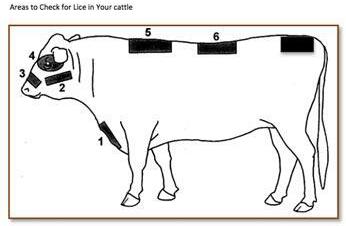
Going forward we will find this two pronged approach to lice control is probably going to be necessary. Keep in mind with in secticides one must follow the label rec ommendations as unlike antibiotics prescriptions cannot be written by veterinar ians for species not on the label. This makes if difficult for species like sheep or goats or bison where almost no insecticides have this species on the label. I am mentioning this in case any cattlemen also have these species on their farms and ranches
We have gone a long time really not hav ing to deal with lice issues, but we need to address timing, alternating products and ex amining to see which lice are causing us problems in order to better determine the optimal treatment strategy.

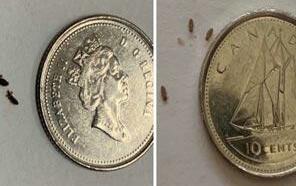
Gelbvieh guide • Fall 2022 • Page 17
The Mann family owns or leases 27 quarters in the rolling prairie of East Central Saskatchewan near Semans. In the fall of 2021 Evan, Alicia and their children were awarded Commercial Breeders of the Year by the ManSask Association.

Left to Right Back row: Blair Bentz (Goodview Gelbvieh & nominator), Parker Mann, Alicia & Evan Mann, Brett spray (Triple S Cattle Co. & ManSask Director) Left to Right Front Row: Jaylynn & Bridgette Mann
Evan was raised on a mixed farm and has farmed on his own since he was 16 but he and his family (father and brother) still help each other out. Alicia was raised on a 350-head Katahdin sheep farm and showed sheep at Agribition for 11 years before marrying Evan. Their farming backgrounds go back several generations in this largely rural area of Saskatchewan.
They own 150 head of commercial Black and Red Angus Hereford cross females and were using Hereford bulls, but 12 years ago they started using Gelbvieh bulls from Goodview Gelbvieh and are extremely pleased. They love the thickness, depth and hindquarter of the Gelbvieh breed and they found that they were able to still maintain a smaller framed herd which works exceptionally well on their native pasture. Alicia’s words of wisdom for commercial breeders - ‘Everybody likes certain characteristics in a bull, follow your instinct because your herd bull will ultimately have a direct e昀ect on your calf crop.’
They calve in March/April and ship their steers directly o昀 the cow in October/November to a pre-sort sale at Kelvington Stock Yards and have noticed that there is a de昀nite improvement in the weaning weights of their calves. They keep their heifer calves to put into their herd as replacement females. Blair Bentz from Punnichy Saskatchewan was delighted to share that the Mann’s are very passionate about their cattle and the Gelbvieh breed. In fact, so much so, that young Parker at the age of 14 already owns 14 head of purebred Gelbvieh females. Alicia mentioned that the encouragement and support of the Gelbvieh breeders has made it possible for Parker to get into purebreds and that Blair is Parker’s mentor.
The girls are members of the local 4-H Horse and Sheep Clubs while Parker is in the Beef Club. All of the children are active working members on the farm. Presently they are building a
Families that Farm Together Stay Together - Mann Ranch

 Gail Anderson & Sarah Van Schothorst
Gail Anderson & Sarah Van Schothorst
handling facility for a 昀ock of Katahdin sheep. Parker, with the help of his sisters, tacks the boards up and the girls then pound in the rest of the nails.
Family means a great deal to the Mann’s. They harvest thousands of acres of grain (barley, canola, wheat and oats) in the fall and they take the time to have meals in the 昀eld. This past August they celebrated Evan’s father, Bill’s birthday with a potluck supper attended by the entire family and then a bit later they celebrated Evan’s birthday in the 昀eld with a turkey supper and a birthday cake.
Last year the Mann’s purchased three quarters seeded with brome grass and alfalfa as fall pasture for the cattle after the calves have been weaned. This lush pasture gets the cattle into perfect condition for winter. They like the temperament of the Gelbvieh breed and they work their cattle on horseback along with a well-trained Border Collie/ Blue Heeler cross dog.

The Mann’s are very community oriented and this year Parker decided to sell tickets on his 4-H steer with the proceeds going to a young local family, Paul and Amanda Hordos, whose baby was born with a rare genetic disease. Little Grace will require special equipment and nursing care at home. Parker and his steer raised $11,000.00 to give to this local farm family whose little baby will 昀nally be able to come home this fall to be with her family. Model Meats in Watrous donated the cutting and wrapping and Grandpa Bill, Dad Evan and the town of Semans donated a $400.00 Gift Certi昀cate from Grey Wolf/Prairie Meadows online metal art store in Raymore as second prize for the draw.
The folks at Mann Ranch are an admirable example of an extended family who encompasses a work ethic instilled at a young age along with an entrepreneurial spirit that promises a bright future for the Gelbvieh breed!
‘Turkey supper with fresh veggies’
‘Bringing the 70th Birthday Celebration to the 昀eld’
‘Parker bringing home the bulls’
Page 18 • Fall 2022 • Gelbvieh guide
• Set includes six steakhouse knives presented in wooden storage box with a glass presenta琀on window


• Each knife is cra昀ed from durable Stainless-Steel
• Rosewood handles are secured to a full tang with triple rivets and are contoured for a secure, comfortable grip

• Sharp serrated edges on the blade are designed to cut through meat easily

• The silver accent chest latch on the box secures knives for transport and storage

• Utensils made with FDA materials
Laser logo to box and handles

Men’s/Ladies Techno Lite Unlined Vest CE703/CE703W Men’s Sizes SMLXL 2XL 3XL $72.20
compliant
engraved
Niagara Cutlery™ 6-Piece Steak Knife Set KS58 Qty. $23.00 • Trucker cap with premium mesh panels • Hard buckram. Structured • Matching plas琀c snapback closure Embroidered logo to front center – 50th Anniversary logo grey/red with Beyond Golden below in grey YP CLASSICS® Retro Trucker Cap 6606 Qty. 4XL 5XL Ladies Sizes SMLXL 2XL 3XLXS 50th Anniversary Limited Edition Buckle Requested Number (1-50) Qty. $450.00 Only 40 Buckles available for pre-order. Back of buckels are engraved from 1-50. Number requests are a first come basis and will be confirmed during order processing. Fabric: 2.3 oz. / 78 gsm 100% polyester pongee. Water-resistant finish. Center front reverse coil zipper with autolock slider and reflec琀ve toggle. Lower concealed pockets with zippers. Adjustable shockcord at hem. Reflec琀ve piping at front shoulders. 50th Canadian Gelbvieh Associa琀on logo embroidered logo to le昀 chest, grey/red logo Beyond Golden - embroidered to back bo琀om of vest in grey. Adult Unisex Sizes SMLXL 2XL 3XL 4XL 5XL Youth Sizes SMLXL 2XL 3XLXS Unisex Adult/Youth Score Mesh Lined Track Pant P04175/P4175Y 100% polyester outershell. Mesh lined upper, lower leg lined. Wind and water resistant. Elas琀cized waistband with adjustable drawcord. Reflec琀ve trim on back of leg, side seam pockets. Hook and loop tape at hem vent for easy hemming. YKK zippers 50th Canadian Gelbvieh Associa琀on – embroidered logo on le昀 front of leg star琀ng at top of zipper and close to side seam, grey/red logo Beyond Golden – embroidered down the back of le昀 leg star琀ng below reflec琀ve trim and close to side seam, grey thread Adult $69.00 Youth $67.00 Adult Unisex Sizes SMLXL 2XL 3XL4XL Youth Sizes SMLXL Unisex Adult/Youth Everyday Fleece Hooded Sweatshirt ATCF2500/ATCY2500 13-oz, 50/50 co琀on/polyester fleece. Compacted yarns to minimize shrinkage. Double lined hood with drawstring. An琀-pill. Classic fit 50th Canadian Gelbvieh Associa琀on – logo embroidered logo to le昀 chest, grey/red logo Beyond Golden - embroidered to back bo琀om of hoody in grey. Adult $58.00 $63.00 Youth $56.00 $65.00 S-XL2XL-4XL Email order form to: gelbvieh@gelbvieh.ca Sarah Van Schothorst, BSc Canadian Gelbvieh Associa琀on, CEO 403-250-8640 All pricing is subject to applicable taxes and freight charge. Please enter the quantity above the lines provided Gelbvieh guide • Fall 2022 • Page 19


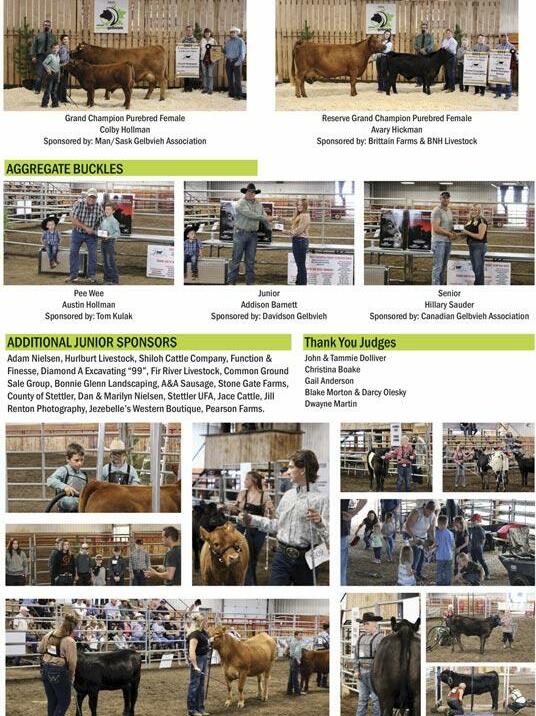
Page 22 • Fall 2022 • Gelbvieh guide

Gelbvieh guide • Fall 2022 • Page 23
THE POWER OF GENETIC RECOMBINATION OR... It’s Complicated”
















































































 Sean McGrath
Sean McGrath
Perhaps the question I am most often asked regarding genetics is how full sibs or animals with the same pedigree can have different EPD. A good way to explain this is through a pedigree tree. In this example, we are going to breed Mr. Greenlight to Miss Redlight to create 2 full sibs (Green light JR and Miss Redlight 2) which we will then mate to produce a sample of 10 full sibs that represent just a few of the thou sands of potential outcomes (Figure 1).
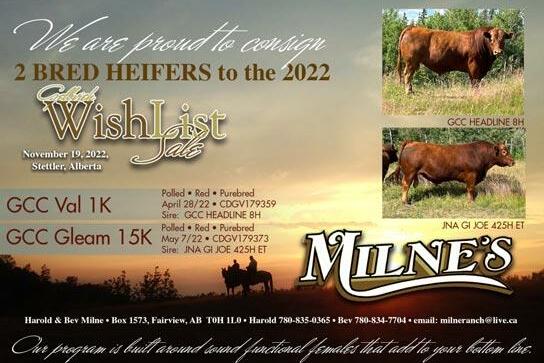
Figure 1. A pedigree tree showing 2 matings of Mr. Greenlight to Miss Redlight and the subsequent mating of full sib offspring Greenlight JR and Miss Redlight 2 to produce 10 calves.

Page 24 • Fall 2022 • Gelbvieh guide
Our logical mind may say at this point that these offspring should be very similar. After all, the pedigree is identical on both sides of the final mating. This would be a very tightly linebred scenario. Let’s follow our example through in a bit more detail and see what happens.
First, we need to understand that every calf is a combination of 1⁄2 of the genes from the sire and 1⁄2 from the dam. These genes are spread across 60 chromosomes or 30 pairs. For this example, we are going to simplify things and use 3 pairs of chromosomes to make our point. We will use Mr. Greenlight’s chromosomes as an example (Figure 2.). There are two pairs of regular chromosomes (Pair 1, Pair 2) and 1 pair of sex chromosomes (Pair 3). The sex chromosome will determine if the calf is a male or female. If Mr. Greenlight passes on the small chro mosome in pair 3 the calf will be male. If he passes on a large chromo some from pair 3 the calf will be a heifer.


To further simplify we will assume that Mr. Greenlight is homozy gous for every gene in his DNA. In other words, for every gene both of his copies are the same. We will assume the same thing for Ms. Redlight. This massive oversimplification means that the original animals in the pedigree can only pass on one version of each gene they possess.
In the first mating we get one male calf and one female calf. They each contain one gene copy from Mr. Greenlight and one copy of each gene from Ms. Redlight. The pedigree tree is shown fleshed out to show the actual chromosomes and DNA that are passed forward (Figure 3.). If we look at the example, it is apparent that even though Mr. Green light Jr and Miss Redlight 2 have the same parents (they are full sibs) that they have 1 chromosome in pair 3 that is completely different (cir cled). If they did not, they would both be the same sex. In this second generation, it also appears that the chromosomes and thus the DNA of these 2 full sibs are very close.
Figure 2. Mr. Greenlight's chromosome pairs Figure 3. Chromosome map of the pedigree tree for Mr. Greenlight and Miss Redlight matings and subsequent full sib matings.

Gelbvieh guide • Fall 2022 • Page 25
In the next generation, things start to look more complicated. To understand this, it is important to realize that animals do not pass on an exact replica of one of their original chromosomes. During the pro cess of meiosis (producing sperm and eggs) the chromosomes will trade parts of their DNA with the other partner in their chromosome pair. This is called random recombination and is very important as it produces much of the variation that allows animals and populations to adapt to changing conditions over time. This variation is a key driver of evolution and is what creates the differences that allow cattle breeders to select cattle that fit their long-term goals. Again, these 10 calves represent a very simplified example of the potentially infinite combinations that can occur just in this simple breeding example. Look ing at the chromosome profile of the example calves, we can see DNA that ranges from exact copies of grandparent DNA, matches to parent DNA and combinations that looks vastly different from any previous generations. This is all happening in a full sib mating situation. If ani mals are less closely related, the phenomenon could be even more pro nounced.
To flesh things out a bit further let’s examine 4 of the offspring from the chromosome diagram as examples (Figure 4, 5, 6, 7). We will as sume for the purposes of our example that there are only 3 traits, calv ing ease which is all on chromosome 1, weaning weight that is contained on chromosome 2 and sex that is determined simply by which copy of pair 3 is received from the sire.
Let’s further assign a genetic value to the genes on each of the first 2 chromosome pairs (Table 1.). By using some simple math based on what DNA the calf received we can thus assign an EPD for Calving Ease and Weaning weight to our 4 examples and see how the same pedigree can result in a very different EPD.
Table 1. Genetic values for Green and Red genes for Calving Ease on Chromosome pair 1 and Weaning Weight on Chro mosome pair 2

Figure 4, A male calf that received all Green genes His genetic value is CE20 and WW +100. Geneti cally the calf is identical to the original Mr. Green light.
Figure 5. A fe male calf that received 1/2 Green and 1/2 Red genes. Her genetic value would be the average of Green and Red with CE 0 and WW +75.
Figure 6. A male calf with approximately 70% Green genes and 30% Red genes. His re sulting genetic value is CE -8 and WW +85.
Figure 7. A fe male calf with Red genes on pair 1 and Green genes on pair 2. Her resulting CE is +20 and WW is +100.





Page 26 • Fall 2022 • Gelbvieh guide
Looking at some of the potential outcomes shown in the chromosome chart, we can start to see that things can get com plicated quickly. In real life, cattle have 10 times as many chro mosome pairs, hundreds of times as many traits and thousands of times as many genes. Instead of the genes for complex traits like growth or fertility being contained on a single chromosome they are spread across the genome of the animal (Figure 8).
How Do We Figure Out the Complex Problem of What Genes are Passed On?
If we head back to the original comment regarding the most common question received regarding genetic evaluation and why an animals EPD may be different from a full sib or even from the parental average, I think the chromosome example starts to explain how some of that variation may occur. Through the process known as random recombination of genes, each new generation, every sperm, and every egg contain a unique portion of sire and dam DNA. This is extremely important for animal breeders as it lets us create/select genetics that can accomplish specific goals. For example, in our simplified 3 chromosome world, we can see how we could create a “curve-bender” animal with all red genes at pair 1 (easy calving) and all green on pair 2 (heavy weaning weight).
Fortunately, there is a lot of genetic overlap between animals, and so we can start to predict potential outcomes. The first basic step is to start with the assumption that offspring will be the average of the sire and dam. This is generally a safe place to start. The second step is to collect performance data on the ani mal and the other animals that it is managed with. If we man
aged the 10 offspring shown in our Chromosome chart to gether, we would expect to see some performance differences in Calving Ease and Weaning Weight. These differences can help to inform us about how much Green vs. Red genes each individual carries. In the real world it is a bit more complex, looking more like Figure 8., so we use more complex methods to help determine the DNA contained in each ani mal. If the animal has offspring, we can use the information from their performance to help us figure out the genetics of the parent stock with increased accuracy.
Finally, with today’s technology we can conduct a highdensity DNA test in which we go directly into the DNA of the animal and look at what components are present in the genotype of the animal. In some cases, this may be for a sin gle gene such as colour (homozygous black for example) or it may be for a more complex set of traits spread across mul tiple chromosomes such as growth, longevity, or carcass merit.
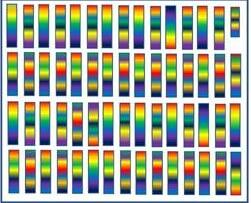
As we determine more information about the DNA an ani mal contains it is possible that the animal may change from our original prediction or away from the parental average or even from full siblings. Thinking about genetic recombina tion and variation explains the importance of continuing to measure and collect the data that is crucial for understanding each new generation of genetics.
This simplified example also reveals some of the power of modern genetic evaluations to navigate through an animal’s genetic map and determine their relative genetic merit for various traits. This is a tremendously powerful tool for seed stock breeders when we are sorting through genetic recom bination and variability to select towards specific goals.
The power of recombination is that it lets us breed some cattle that are beyond expectation. By measuring cattle and participating in genetic evaluation, we can then identify those cattle and use them moving forward to help reach our goals.
 Figure 8. A more realistic graphic depiction of 30 chromosome pairs contain ing multiple genes per chromosome. Note that the calf is a male (Small Y chromosome in the top right)
Figure 8. A more realistic graphic depiction of 30 chromosome pairs contain ing multiple genes per chromosome. Note that the calf is a male (Small Y chromosome in the top right)
Gelbvieh guide • Fall 2022 • Page 27
Diane Panrucker


In 1989, Diane decided she was ready for a change in lifestyle. She bought a piece of property by Hoadley, Alberta, and spent the next few years 昀xing it up. After moving from the city and getting the farm set up the way she wanted, she started researching cattle breeds to purchase. In 1992, Diane purchased 12 purebred Gelbvieh bred heifers from Mountain View Farms in Swan River, Manitoba. Not knowing cattle, that 昀rst year was a hard learning experience. However, not being one to give up when things got tough, she pushed on to make her dream come true. Over the years, she built her herd one animal at a time using the best AI Sires that she could 昀nd and a herd bull here and there. While she would purchase bulls to bring in new genetics, purchasing females was few and far between, with only 3 females being purchased over the years. ACT Gold Star 109F was purchased at the Calgary Stampede from Carlson Cattle Company, after she won the Heifer Calf Champion at the World Gelbvieh Conference Show as well as placing 2nd alongside her mother in the Grand Champion Female at the same show. KCB Pinto Creek Nadia 13N was purchased at Farm Fair international from Pinto Creek Gelbvieh. And last but not least, GCC Black Shadow 150T was purchased at V&V Farms sale from Milne’s Gelbvieh. Before becoming a Gelbvieh breeder Diane was the following; Research Scientist at UofC Calgary, Department of Medical Physiology, Growth and Development Research Group, Ph.D. Candidate, Bachelor of Science, UofC, Animal Biology, Master of Science, UofC, Medical Science, Doctor of Philosophy, UofC, Fetal and Reproductive Biology.
After a lot of research, Gelbvieh genetics and numbers seemed to 昀t the best with what Diane was looking for. They came out small, had a ton of milk, grew like weeds, and docile temperament. Diane joined the CGA in the early 1990’s with the farm name Pandiana Farms. The farm name was formed by combining her 昀rst and last name. Diane loved going to shows. She was very proud of her animals, and loved networking with other breeders. She was a regular at Farm Fair International, Westerner Days, and Mountain View County Fair & Rodeo. She also attended the Calgary Stampede and the Canadian Western Agribition. Some of her biggest achievements at shows were winning the Premier Exhibitor Award at Farm Fair International 1997, the Ambassador Award at Farm Fair International in 1997 and 2004, Grand Champion Female 2001 Mountain View County Fair, Reserve Grand Champion Bull Westerner Days 1999. After selling her heifers and bulls privately and at a few select shows and sales, Diane decided to start her own Production Sales with her Annual Top Guns Bull Sale and Focus on Females Production Sale. Both of these sales started out as Pandiana Farms solely, but grew to have multiple consignors over the years.
Diane was a part of the drive to get the Canadian Junior Association started. Diane was on the board of directors for the Canadian Gelbvieh Association 1995, 1996, 1997, 1999, 2000 (Vice President), 2004, 2005, 2006 (President). She has been the only female president of the CGA. Diane was a major presenter at the Canadian Bovine Genomics Workshop held in Calgary, Alberta on Sept.14, 2009. The workshop was the 昀rst step in developing a national bovine genomics strategy for Canada. Diane passed away March 19th, 2020. Her family attended the 50th anniversary banquet held in Stettler to accept Diane’s induction into the Hall of Fame.

Steve & Vera Denecky

 In the 1970’s Steve and the Nelson Brothers Ranching of Glenwood, AB imported some of the 昀rst German females sight unseen. Steve was president of the Gelbvieh Association of Alberta for many years in the 1980’s. In 1984 he toured Germany along with Albert Carlson and Philip Kaiser. Steve and Vera promoted the Gelbvieh breed by showing cattle all over North America winning many awards and trophies. They sold cattle at Calgary, Edmonton, Regina, and Denver shows with success.They exported the 昀rst Canadian bred bull to Australia, Gold Dust Long John. Steve currently has an inventory of Gold Dust Long John semen for sale. If you are interested in taking advantage of this golden opportunity please contact the o�ce.
Sarah Van Schothorst
In the 1970’s Steve and the Nelson Brothers Ranching of Glenwood, AB imported some of the 昀rst German females sight unseen. Steve was president of the Gelbvieh Association of Alberta for many years in the 1980’s. In 1984 he toured Germany along with Albert Carlson and Philip Kaiser. Steve and Vera promoted the Gelbvieh breed by showing cattle all over North America winning many awards and trophies. They sold cattle at Calgary, Edmonton, Regina, and Denver shows with success.They exported the 昀rst Canadian bred bull to Australia, Gold Dust Long John. Steve currently has an inventory of Gold Dust Long John semen for sale. If you are interested in taking advantage of this golden opportunity please contact the o�ce.
Sarah Van Schothorst
Page 28 • Fall 2022 • Gelbvieh guide
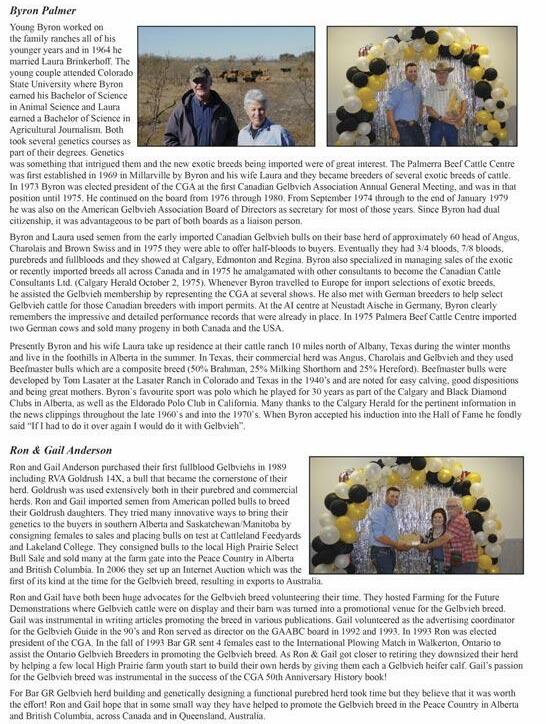
Gelbvieh guide • Fall 2022 • Page 29
CGA 50th Anniversary History Book

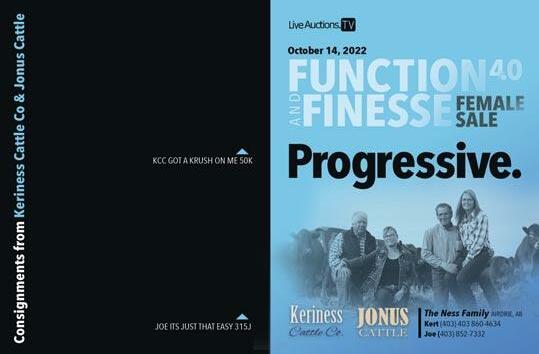
History book $90.00 Shipping $19.41
In celebration of the Canadian Gelbvieh Association 50th Anniversary we have published a history book 250 pages and over 800 pictures. Read stories on members past and present, their successes, joys and struggles. To get your copy contact the Canadian Gelbvieh Association. gelbvieh@gelbvieh.ca or 403-250-8640.

Payment can be made by cheque payable to Canadian Gelbvieh Association, credit card, or by e-transfer to gelbvieh@gelbvieh.ca. gelbvieh@gelbvieh.ca 5160 Skyline Way NE Calgary, AB T2E 6V1 403-250-8640

Page 30 • Fall 2022 • Gelbvieh guide
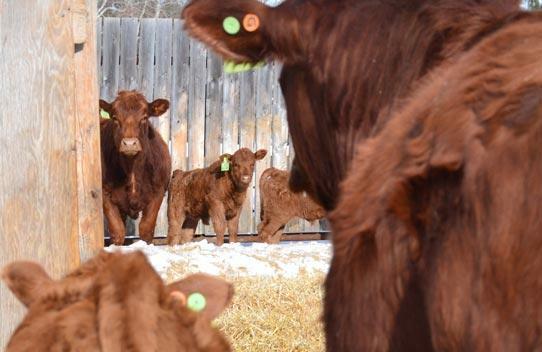




Gelbvieh guide • Fall 2022 • Page 31 Purchase tags through the CCIA webstore or by phone. tags.canadaid.ca 1-877-909-2333 Ask about our “昀rst-time order” rebate! You’re Invested in Gelbvieh Genetics.You’re Invested in Gelbvieh Genetics.
Kyle, Jocelyn and their daughter, Quinn, live outside of In nisfail and farm with Jocelyn’s family, under the name Daines Cattle & O’Neill Livestock. They raise purebred Charolais, Sim mental and Angus cattle, as well as percentage cattle. Kyle and Jocelyn primarily own Charolais cows, but believe a good one is a good one and appreciate cattle from all different breeds. They enjoy showing cattle at the fall shows and have gone to Denver several times to exhibit cattle. Both Kyle and Jocelyn were raised showing cattle. Kyle grew up in Ontario on a pure bred Simmental operation. Jocelyn was raised just south of where they live now and grew up showing Maines, Angus and show steers. Kyle and Jocelyn inititally met at a cattle show, shortly after Kyle moved to Alberta to work as a herdsman for Tim and Kim Matthews.
They market cattle throughout Canada and the US. They con sign females to select female sales, primarily in December. They also have a bull sale, the first Thursday in April at the Innisfail Auction Market.



In addition to working on the farm, Kyle sells feed for Trouw Nutrition and Jocelyn is an elementary teacher in Innisfail.

Page 32 • Fall 2022 • Gelbvieh guide
Canadian Western Agribition Nov. 30 - Dec. 1 2022
The Sweetheart Gelbvieh Classic is open to Gelbvieh females of any age who are at least 50% Gelbvieh and who are entered in the Canadian Western Agribition Gelbvieh show. Females under two years of age must be 100% available to the draw winner. Owners of females two years of age and over may choose to offer flush opportunities or ownership (Flush cost will be at winners expense). Entries must be made to Cynthia Wirgau or Maureen Tubman by noon Sunday November 27, 2022. Entry fee is $100 per animalmust be a Sweetheart member to enter. Heifers entered in the National Gelbvieh Sale will be exempt from the $100 nomination fee. (Membership must be paid)
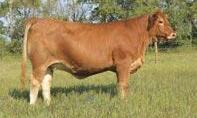
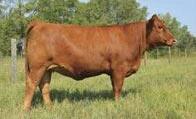
Membership to the jackpot is $300 which entitles the member to one voting ballot, catalog of entered females, entry into draw down prizes and a commemorative sweater. Membership must be paid in full prior to voting. No proxy judging. The last name drawn on Thursday at 12:30 during the Parade of Females will win the right to choose any female entered in the Sweetheart Classic following the terms of the ex hibitor. If the draw winner is also exhibiting a female, they may not pick their own entry.
Ballots will be distributed from the Gelbvieh booth beginning Wednesday at noon. Judging of the Sweet heart Classic will begin Wednesday Nov 30, must be turned in by 12:30 Dec 1. The champion will be named immediately following presentations of Commercial and Purebred Breeder of the Year.
The member exhibiting the female chosen by the membership through votes will receive 10% of the futurity pot. The female chosen by the draw winner will receive 90% of the futurity pot. Minimum payout to the chosen female is $6000. If the winner is a sale entry, the exhibitor will pay commission on sale aver age.
Online voting will be available through the Man/SK Gelbvieh Facebook page where females will be pro filed. Votes for the top 4 can be sent to mansaskgelbvieh@gmail.com by 10:00 am November 30.
For more info or to purchase membership contact Cynthia 204-886-7683 or Maureen 306-730-7822 Register for membership by Oct 1, 2022 to ensure proper jacket sizing.

Membership/Nomination Form
I (name)
Would like to be a part of The Sweetheart Gelbvieh Classic
Address
Phone: Jacket Size:______
Enclosed is my $300.00 membership fee
As a member would like to nominate the following females at $100.00 per animal. Membership MUST be paid prior to Agribition.
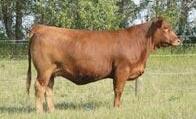
As a member I would like to nominate the following females at $100 per animal.
1. _________________________________
2. _________________________________
Please send to : Man/Sask Gelbvieh Assoc. PO Box 25, Narcisse MB, R0C 2H0
Etransfer also accepted to mansaskgelbvieh@gmail.com
Gelbvieh guide • Fall 2022 • Page 33
_______________________________
Layne and his wife Paula operate Horseshoe E Charolais, lo cated east of Kenaston, Sk. They raise purebred Charolais cattle, as well as a commercial herd of red and black cows, bred Charo lais. Layne and Paula also grain farm, growing canola, wheat, bar ley and oats.


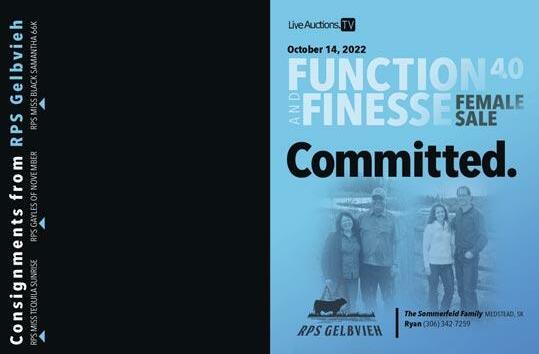
Horseshoe E Charolais have exhibited cattle at various shows across Canada. They host their annual bull sale at the farm in early March, as well as consign purebred Charolais females to a sale in early December. Layne has had the privilege of judging multiple breeds at CWA, as well as various other shows in Saskatchewan, Alberta, Manitoba, Ontario and Quebec.
Layne is honoured to have the opportunity to judge the Gelbvieh Show at Agribition in 2022.


Page 34 • Fall 2022 • Gelbvieh guide
CANADIAN BEEF IMPROVEMENT NETWORK
The Canadian Beef Improvement Network (CBIN) has continued to advance a steady pace in recent months with significant gains being made in devel opment. In order to achieve these advancements, there has been a need at times to focus on specific steps of the devel opment process. Although that has been important in achiev ing tangible outcomes it is equally important that we don’t lose sight of the broad vision of CBIN - a multi-step devel opment process with the ultimate goal of unlocking value for the entire Canadian beef by connecting genetic data to pro duction metrics from conception to consumption.


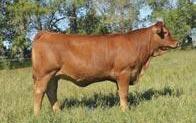
As we have outlined on several occasions, CBIN has a fourstep development plan to drive this transformational initiative forward to full operation and this plan in its entirety remains our overarching goal. Only then will we be able to truly cap ture the value of genetics across the entire beef production chain. The four-step plan is as follows:
A VISION OF VALUE CREATION
 Sandy Russell, CEO Canadian Beef Breeds Council
Sandy Russell, CEO Canadian Beef Breeds Council
1. Build the Data Foundation: Build an operational sys tem that will standardize data collection amongst participating Breed Associations (in progress and to be completed by early 2023).
2. Facilitate Data Linkages: Develop a cross-sector ge netic data hub that will facilitate linkages of genetic data to traditional production metrics.

3. Translate Data: Create the analytical resources to as sist in the translation of genetic data into informed decisions that allow increased value capture from conception to con sumption.
4. Drive Adoption: Advance the understanding of the value of genetic data incorporation and resource utilization across the entire beef production system.
Gelbvieh guide • Fall 2022 • Page 35
With step one, the development of a registry portal to standardize and unify data collection, well underway, we now must shift our focus to the next stages of development. It is only through connecting genetic data to the other pro duction metrics of importance within the beef production system will we be able to fully capture the value of genetic data. There is no doubt that CBIN is a transformational undertaking for the Canadian beef industry with significant potential to create sustainable value for all segments of the production chain and all steps of the development plan are critical to success but if there is one that, in my mind, is the most challenging yet most fundamental to achieving the vision of CBIN it is step two. Connecting genetic data to production metrics across all segments of our beef pro duction system is no small feat but yet without tackling this broader linkage we truly will fall short of the ultimate goal of CBIN.
Genetic advancements within the beef industry have lagged other livestock production systems and while I truly believe our diversity is our greatest advantage, it has also been our greatest challenge at times. Identifying that diver sity to help inform producers’ breeding and production decisions is essential to creating value within the beef pro duction system and being able to consistently replicate that value within each of our businesses. While we know that Canadian beef cattle genetics are highly sought after, both domestically and internationally, the ability to access and interpret genetic data has been limiting and it was clear that
the data infrastructure did not currently exist within the beef industry to efficiently and effectively link genetic data to metrics of importance across the production chain. It is for these reasons that we must tackle the next steps in the development process, as challenging as they may be. Only then will we be able to fully realize both the economic and environmental value of data driven genetic advancements within the Canadian beef industry.

Substantial collaborative efforts have driven CBIN to this stage of development but clearly, much work lies ahead in our efforts to fully capture the return on our investment in this transformational initiative. While the momentum has been significant recently, we must continue to drive for ward in the development of CBIN in order to capture the value potential of Canada’s leading beef cattle genetics. This will require continued collaborative efforts of all those involved in beef production and I am confident we will continue to rise to the challenge and capture the potential opportunity that lies ahead.
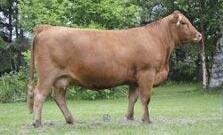
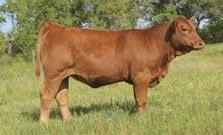
Page 36 • Fall 2022 • Gelbvieh guide
The term preconditioning describes management of a calf from weaning until 30 to 60 days after wean ing. Backgrounding is taking those calves and put ting them on a grower ration in a feedlot until they reach 750 to 900 pounds, and then they are moved to a finishing facility.

- If a person is going to retain calves long enough to get them past weaning stress (with the goal of getting a premium for weaned, preconditioned calves when they are sold) or retain ownership through harvest, it is important to get the calves transitioned as easy as possible to minimize health problems. How a person weans calves can
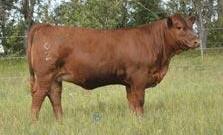

PRECONDITIONING
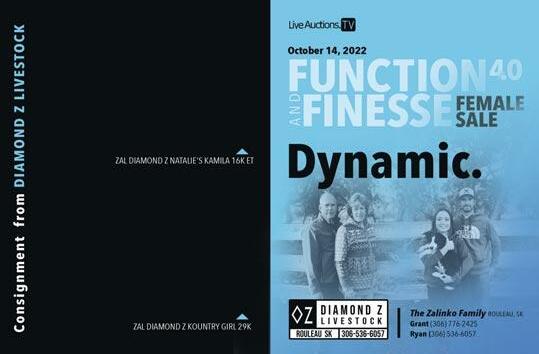
Gelbvieh guide • Fall 2022 • Page 37
make a big difference in their future health and performance.
If producers can use what’s called a two-stage weaning process with “nose flaps” this is the least stressful way to wean—for both the calves and the cows. Another option and second best is fenceline weaning. You can keep the cows and calves on pasture and at weaning just have a separation with a fence between them. The most stressful way to wean is to put the calves in a corral and take the cows away.
With fenceline weaning the calves (and cows) still bawl and pace the fence, but the calves are not as frantic as when suddenly confined in a corral, with strange feed and water, and mom gone. If at all possible, do not to process the calves or the cows the day you separate them. Pre-weaning vac cinations should be given prior to that, because that day you want them to be as quiet and calm as possible when you put them across the fence from one another.
BACKGROUNDING - Some ranchers hold calves over as yearlings, to sell later, and some people buy light calves in the spring to put on grass and grow to a larger weight. Some put weaned calves into a confinement program—where they are fed a growing ration—until they are ready to go to a finishing facility.
Bart Lardner (Department of Animal & Poultry Science, College of Agriculture & Bioresources, University of Saskatchewan) says that after wean ing there are several strategies to grow those calves at a targeted rate of gain, and to ensure good pro ductivity and future performance after they get to the feedlot.
“Backgrounding always aims for a controlled rate of growth, trying to maximize frame size be fore we start depositing fat. That way we produce greater carcass weight at slaughter. It’s all about muscle development and skeletal size, for best po tential growth,” he says.
“Every animal has potential to maximize growth. What that ultimate growth can be is con trolled by genetics, but the part we can control is the environment, and nutrition. Most spring-born calves are weaned at 5 to 7 months and may go
into a backgrounding program, depending on the end target. A big-framed calf might go into a feed lot sooner, whereas a smaller frame-size calf might be backgrounded longer or might go to grass.”
Some of the light calves will be put on a growing ration during winter and then go to grass in the spring for several months.
It depends on each producer’s situation and what’s available as feed. “I tell producers that if they are going to retain their calves (rather than selling them at weaning time) and plan to back ground and grow them at that slower rate, they need to make sure they have a target end weight in mind. Are they aiming to put on 150 pounds? Or 200 pounds? What is the target and where is the market at the end of a backgrounding period? The rate of gain could vary from 1.5 pounds per day to 2 pounds,” says Lardner.
“In a dry-lot system we look at gaining 2 pounds per day, or a little more, but in extensive field systems where calves are grazing we’re look ing at between 1.5 to 1.8 pounds per day, knowing that these calves won’t get the higher rate of gain you’d see in the dry-lot system. It’s all about cost effectiveness. A person might have to keep them a little longer on grass, but if this is cheaper, it works.” Producers need to use whatever forage is available.
“Make sure that when calves get to that 700 to 900 pound target—whatever it might be—they will be going into a feedlot. Then after another 150 to 200 days they will be at the targeted finish weight of 1300 pounds. Know your program and don’t enter into it without some pre-planning,” he says.
“Make sure you have yardage cost figured out on your backgrounding program—whether it’s 20 cents per day, or 50 cents per day, or whatever it might be on a forage-based program,” says Lard ner. Feed costs can be 60% of total costs but you also must consider other costs, including direct costs and yardage.
“The diet in a backgrounding system should be primarily forage based; we are talking about 55 to 70% forage. This gives us that lower rate of growth to put on more muscle rather than fat,” he explains.
“Conventional dry-lot systems, which take in 500 to 600-pound calves after weaning, are prob ably the norm here in western Canada. The pro ducer needs to work with a nutritionist and the NRC guidelines, to know what the protein and energy requirements would be for that size calf. If you want those calves to put on 1.8 or 2 pounds a day, for an end weight of 800 pounds when they go into the feedlot, you need to figure out the amount of protein and energy required,” says Lardner.
PRECONDITIONING a person is going to retain calves long enough to get them past weaning stress or retain ownership through harvest, it is important to get the calves transitioned as easy as possible to minimize health problems.
If
Page 38 • Fall 2022 • Gelbvieh guide
This means doing feed tests and knowing your for ages and concentrates—energy density and protein density. “You can add different ingredients to come up with the proper diet to make sure those animals are getting their requirements,” he says.
“In the programs we’ve looked at, we always use our dry-lot system as a control—to compare alter native backgrounding systems that might be an option for a producer rather than having to set up feed bunks in a dry-lot pen with feeding equipment like a tractor and a feed-wagon. There are extensive grazing systems that could work—such as putting 500-pound calves on a swath-graze program. The calves might be able to utilize a cool-season annual like barley or maybe a warm-season annual like a millet crop,” he says.
In a 3-year study, performance of backgrounded calves in a dry-lot system was compared to calves out in the field grazing swathed barley or swathed millet. “We put them out with some dry cows to teach them where to go and to be their security. The calves settled right in and realized this was their feed source,” says Lardner. The dry cows served as role models.
“The dry-lot system calves gained 1.9 pounds a day and the swath-grazed barley calves gained about the same. The swath-grazed millet group gained 1.3 pounds a day. The nutrient value of the millet com pared with the barley swath was less because the millet had more moisture.” The calves weren’t getting the same amount of nutrients per pound of feed.
“We looked at the cost of gain—what it cost for every pound put on. The calves grazing wathed barley were roughly at 43% less cost of gain compared to our dry-lot system, due to less yardage cost and no manure hauling cost,” says Lardner.
“We also did some work with grazing standing corn, wondering if a 500-pound calf will background in a winter system on whole plant corn. This is a typical winter grazing system in Canada with pregnant beef cows but the question was whether it also works with weaned calves. We compared it to the dry-lot system and barley swath grazing during a 3-year study and we saw a little lower rate of gain compared with the drylot system. In the dry-lot feeding program, energy and protein intake was not challenged as much as it was on cold days out in the field—where calves must go out and try to utilize the whole plant,” he explains.
“But it all worked out in the long run, and this is certainly an alternative producers might look at, since we are growing a lot more corn in western Canada than we were 10 years ago. Wintering calves on stand ing corn can be a viable option.”
In the dry-lot system there were more health issues than in the calves wintering out in the fields (on stand ing corn or swath grazing). “We saw some coccidiosis in the dry-lot calves, but not in the extensive grazing systems,” he says. Confined calves are generally more at risk for illness—sharing contagious disease or para sites like lice.
BACKGROUNDING
Out in the extensive system calves seem to be healthier and hardier, though a person needs to be pre pared to deal with wind chill factors and cold stress with shelter or windbreaks.
“We also found that to meet the targeted rate of gain we had to provide a range pellet—at about 5 pounds per head per day. These growing calves need more nutrients than pregnant dry cows just trying to maintain bodyweight. We are asking these calves to grow and gain so they need a higher level of energy and protein.” This can be provided in nearly any form of protein supplement.
Animal health is always important as you grow these calves, so make sure they are well vaccinated and settled prior to going into that backgrounding pro gram. “Be aware of their needs for good wind protec tion, and in some situations bedding—so they are not lying in snow or on frozen ground.” You want to avoid cold stress.
“If producers are considering retaining ownership of calves and backgrounding, the biggest thing is to pencil it out first, and see if it is economical to put that extra 200 pounds on that calf with the resources on your own farm or ranch. t has to fit your own pro gram and resources. Also make sure you have a good marketing option at the end of the backgrounding pro gram,” he says.
A few farmers make a business of backgrounding, taking in grass cattle/stockers or to utilize crops they grow. “With the increasing costs, feedlots tend to take in yearlings more readily than calves—depending on the month and the market. There are sometimes ad vantages in taking weaned calves and growing them bigger on grass or crops. We can put another 150 to 200 pounds on calves, and then bring them into the feedlot where we know our cost of gain,” says Lard ner.
This is also a way to stretch out the beef supply and have cattle to market all through the year—with a steady flow of finished cattle from the feedlot—rather than having most of the animals coming to market at once. “It’s all about supply and demand. When the majority of calves born in the spring, backgrounding at different rates enables feedlots to find a constant supply,
After weaning there are several strategies to grow those calves at a targeted rate of gain, and to ensure good productivity and future performance after they get to the feedlot.
Gelbvieh guide • Fall 2022 • Page 39
WELCOMES NEW BOARD MEMBERS
At April’s Annual General Mee琀ng, CCIA elected a new Execu琀ve Commi琀ee chaired by Lyle Miller, represen琀ng Alberta Ca琀le Feeders’ Associa琀on. Other Execu琀ve include Vice Chairman Howard Bekkering of Alberta Beef Producers; Finance Chairman Dr. Oliver Schunicht, Canadian Veterinary Medical Associa琀on (Alberta); Ivan Johnson, Mari琀me Beef Council (Prince Edward Island); and Ken Perlich, Livestock Markets Associa琀on of Canada (Alberta).
We also welcomed the following NEW Board Members; Ma琀 Bowman (Ontario) and Brad Osadczuk (Alberta) - both represen琀ng CCA; David Saretsky, Canadian Livestock Dealers Associa琀on (Alberta); and Associate Member Shawn Wilson of Canadian Beef Breeds Council (Alberta).
The balance of the CCIA Board remains the same with Don Hargrave, Beef Farmers of Ontario; Duncan Barne琀, Bri琀sh Columbia Ca琀lemen’s Associa琀on; Yvonne Mills, Canadian Bison Associa琀on (Alberta); Reg Schellenberg, CCA (Saskatchewan); represen琀ng Canadian Meat Council, Cam Daniels (Alberta) and Kim O’Neil (O琀awa); Corlena Pa琀erson, Canadian Sheep Federa琀on (Ontario); Sylvain Bourque, Les Producteurs de bovins du Québec; Nancy Howa琀, Manitoba Beef Producers and Shane Jahnke, Saskatchewan Stock Growers Associa琀on.


IN-HOUSE DISTRIBUTION
We’ve moved tag distribu琀on closer to industry
On July 11, CCIA brought tag distribu琀on inhouse and closer to industry. Moving away from a third-party provider allows producers to buy closer to the source and access any approved tag on the market, at compe琀琀ve prices. The webstore (s琀ll at tags.canadaid.ca) has been revamped to provide a seamless shopping experience which is NOW mobileresponsive, so you can shop from anywhere, any琀me. Ask us about our NEW special promo琀on codes for your customers. Also NEW, scheduled pick ups are available at our warehouse in Calgary.

Over 7,000 producers from across the country are already enjoying the convenience of purchasing online at tags.canadaid.ca and through our marke琀ng e昀orts and customer service support, we hope to encourage others to give it a try over the coming months.
UHF PILOT PROJECT
Some of the CCIA Team on hand when the 昀rst shipment arrived in early July

With internal tes琀ng complete and a 昀eld trial in development, Ultra High Frequency (UHF) func琀onality was released to licensed users in the Canadian Livestock Tracking System (CLTS) on July 15. This project was ini琀ated in response to a need brought forward by industry and under the direc琀on of CCIA’s Board of Directors. By linking UHF tags to approved Radio Frequency Iden琀昀ca琀on (RFID) tags in the na琀on’s database, a scan of either tag will now lead to the same animal.
 Matt
Alex Timmer, CCIA Distribu琀on Manager puts away the 昀rst shipment of tags in the Calgary warehouse
Matt
Alex Timmer, CCIA Distribu琀on Manager puts away the 昀rst shipment of tags in the Calgary warehouse
FALL 2022 UPDATE CCIA canadaid.ca
Bowman CCA Ontario Brad Osadczuk CCA Alberta 1-877-909-2333 | info@canadaid.ca | canadaid.ca | support.canadaid.ca | tags.canadaid.ca
Page 40 • Fall 2022 • Gelbvieh guide


Gelbvieh guide • Fall 2022 • Page 41
Maternal Excellence
2022 Dam of Merit & Dam of Distinction Awards
The Canadian Gelbvieh Association is proud to announce the Dams of Distinction and the The Canadian Gelbvieh Dams of Merit Award winners for 2022. These cows represent the very elite of the breed. The Canadian Gelbvieh Association applauds the owners and breeders of these outstanding females.
The Canadian Gelbvieh Association Honors Superior Productive Cows
Each year the Canadian Gelbvieh Association recognizes those Gelbvieh females that have proven to have longevity and productivity. Maternal efficiency is a key economical trait for profitability in the beef industry and cows that calve as two-year-olds and have a healthy calf every year for ten to twelve years, have a greater lifetime effi ciency than cows that must be culled at a younger age for various reasons. Longevity is essential. Cows that get their job done, year after year, with no prob lems, simply make more money.
The Dam of Merit recognizes cows that meet strict selection criteria including early puberty and con ception, regular calving intervals, and above-average weaning weights on at least three calves. A Dam of Distinction honour recognizes cows that meet the same high standards for superior, long-term produc tivity with at least eight calves.
In order for a cow to be recognized as a Dam of Merit she must:
• All data must be submitted to the CGA office by August 31, 2022
• A Dam of Merit must have produced at least three (3) calves and a Dam of Distinction must have pro duced a minimum of eight (8) calves.
• Age at first calving must not exceed 25 months
• Produced a calf that was born between January 1, 2021 and March 1, 2022
• Possess a minimum average weaning weight ratio of 101 for all calves
• Maintained a regular calving interval. Average calv ing interval must not exceed the value calculated using the following formula: (# of calving intervals x 365 days) + 30 days)/# of calving intervals - ORthe female had her third calf before her fourth birth day and maintained a 365 day calving interval there after.

Page 42 • Fall 2022 • Gelbvieh guide
The Canadian Gelbvieh Association recognizes the following members who rank in the top 20 for Owners of Gelbvieh Dams of Merit and Gelbvieh Dams of Distinction for 2022.
Name Dams of Merit Dams of Distinction Total DAVIDSON GELBVIEH PONTEIX, SK 4 28 32 DUANE & LINDA NELSON GLENWOOD, AB 3 23 26
BRITTAIN FARMS FALUN, AB 1 17 18 FLATLAND RANCH HANNA, AB 0 18 18 TWIN VIEW LIVESTOCK PARKBEG, SK 3 14 17
FOURSQUARE FARMS
CARSTAIRS, AB 4 12 16 LONESOME DOVE RANCH PONTEIX, SK 2 14 16 JACE CATTLE COMPANY BOTHA, AB 0 16 16 ALEXANDER & KAYLIN SCHULTZ HAY LAKES, AB 1 14 15
GOODVIEW GELBVIEH PUNNICHY, SK 0 12 12 BARRY & ROBIN MADER PRITCHARD, BC 1 7 8 KOZIAK LAND & CATTLE STAR, AB 0 8 8 JEN-TY GELBVIEH DUCHESS, AB 2 4 6
ROYAL WESTERN GELBVIEH
RED DEER COUNTY, AB 0 6 6 WINDER'S GOLDEN GELBVIEH CAMROSE, AB 4 0 4 ROCKY TOP GELBVIEH BASHAW, AB 1 3 4
7T CATTLE
LACOMBE COUNTY, AB 0 4 4 BNH LIVESTOCK
RED DEER COUNTY, AB 0 4 4 RPS GELBVIEH MEDSTEAD, SK 0 4 4 GREEN ACRES CATTLE COMPANY ANDREW, AB 1 2 3
The Canadian Gelbvieh Association recognizes the following members who rank in the top 20 as Breeders of Gelbvieh Dams of Merit and Gelbvieh Dams of Distinction in 2022.
Name Dams of Merit Dams of Distinction Total
DAVIDSON GELBVIEH
PONTEIX, SK 4 28 32 DUANE & LINDA NELSON GLENWOOD, AB 3 24 27 WINDER'S GOLDEN GELBVIEH CAMROSE, AB 5 16 21
BRITTAIN FARMS
FALUN, AB 1 17 18 FLATLAND RANCH HANNA, AB 0 18 18 LONESOME DOVE RANCH PONTEIX, SK 1 14 15 FOURSQUARE FARMS CARSTAIRS, AB 2 12 14
JACE CATTLE COMPANY BOTHA, AB 0 14 14 TWIN VIEW LIVESTOCK PARKBEG, SK 1 12 13 MILNE'S GELBVIEH FAIRVIEW, AB 1 8 9 BARRY & ROBIN MADER PRITCHARD, BC 0 8 8
HILLSDOWN GELBVIEH
RED DEER COUNTY, AB 3 4 7 ROYAL WESTERN GELBVIEH
RED DEER COUNTY, AB 1 6 7 GOODVIEW GELBVIEH PUNNICHY, SK 0 5 5
JEN-TY GELBVIEH DUCHESS, AB 2 2 4
ABEL FARM LACOMBE, AB 1 3 4 FLADELAND LIVESTOCK GLADMAR, SK 1 3 4 7T CATTLE LACOMBE COUNTY, AB 0 4 4
BNH LIVESTOCK
RPS GELBVIEH
RED DEER COUNTY, AB 0 4 4
MEDSTEAD, SK 0 3 3
Gelbvieh guide • Fall 2022 • Page 43



 Cameron Davidson won Grand Champion Steer at the Mankota 4H Club with his Gelbvieh home-raised steer Big Mac. The show was held on June 12.
Cameron Davidson won Reserve Champion Gelbvieh Bred Heifer at the Swift Current Regional 4H Show on July 1. He exhibited DRT Lonesome I Decide 43J.
Cameron Davidson won Grand Champion Steer at the Mankota 4H Club with his Gelbvieh home-raised steer Big Mac. The show was held on June 12.
Cameron Davidson won Reserve Champion Gelbvieh Bred Heifer at the Swift Current Regional 4H Show on July 1. He exhibited DRT Lonesome I Decide 43J.
Page 44 • Fall 2022 • Gelbvieh guide NEWS & NOTES
On July 23 Jaime Davidson showed the National Junior Gelbvieh Show Reserve Champion Bred Heifer, DRT Lonesome Breeze 39J. FALL GELBVIEH FEEDER SALES... Oct. 26 – Pre-sort Gelbvieh Cross calf sale, Medicine Hat Feeding Company, Medicine Hat, AB Oct. 27 – Pre-sort Gelbvieh Cross calf satellite sale, Heartland Livestock, Swift Current, SK Thank You... The Canadian Junior Gelbvieh Association Facebook Fundraiser Auction raised a total of $5,185 for the Juniors! Thank you to all the bidders and buyers for making it a successful event. Thank you to the following contributors for their donations to the auction: Twin View Livestock Last Mountain Livestock Covington Gelbvieh Ledgerwood Gelbvieh Stone Gate Farm Triple G Gelbvieh Severtson Land & Cattle Bar GR Gelbvieh Steve Denecky Webb’s Machinery Lucille Akitt Western Litho Printers Corb Lund Alberta Whiskey Cake Silver Line Farms Jace Cattle Co. Sign O’ Graphics Merck Animal Health Unger Land & Livestock Prairie Western Rustic Art Tiple S Cattle Co. Maple Grove Gelbvieh First Impressions Jonus Cattle Co.
BUSINESS DIRECTORY











This
This could be your spot! the
This could be your
Gelbvieh guide • Fall 2022 • Page 45
British Columbia Darrell & Leila Hickman RR 1, Sundre, AB T0M 1X0 Ph: 780-581-4510 darrell.ddhickman@gmail.com AlbertaServices United States Breeders Magazines Auctioneers / Sales Management
Call
CGA today to book your Business Card Listing!
spot! Call the CGA today to book your Business Card Listing!
could be your spot! Call the CGA today to book your Business Card Listing! Purebred & Percentage GELBVIEH CATTLE Kelly & Colleen Brittain, Gary & Nicole 780-387-6446 britt4@xplornet.com RR #1, Falun, AB T0C 1H0











Page 46 • Fall 2022 • Gelbvieh guide Alberta LC RANCH Purebred Gelbvieh Ray & Anne Davisson Box 764, Stettler, AB T0C 2L0 403.741.4488 • 403.323.0233 lcranch@xplornet.com rdavisson@cervusequipment.com BUSINESS DIRECTORY GELBVIEH CATTLE SINCE 1972 QUARTER HORSES SINCE 1985 www.milneranch.com HAROLD - 780.835.3065 BEV - 780.834.7704 www.lcranchbulls.com www.jentygelbviehs.com Don & Lorna Okell Box 627 Duchess, AB T0J 0Z0 403-378-4898 403-793-4549 jenty@eidnet.org NELSON GELBVIEH Duane & Linda Nelson Box 1144, Glenwood, Alberta T0K 2R0 (403) 626-3279 “Raising Gelbvieh Cattle Since 1972!” This could be your spot! Call the CGA today to book your Business Card Listing! This could be your spot! Call the CGA today to book your Business Card Listing!













Gelbvieh guide • Fall 2022 • Page 47 Manitoba Saskatchewan The Wirgau’s Box 25, Narcisse, MB R0C 2H0 World Class Cattle - First Class Service Lee & Cynthia (204) 278-3255 Neal & Christine (204) 981-5996 Ontario Knudson Farms Gelbvieh “Breeding for Quality Polled Gelbvieh With the Commercial Man in Mind” c/o James Knudson Ph: 306-322-7158 Box 386, Archerwill, SK S0E 0B0 KFGKFG BUSINESS DIRECTORY Alberta G R Bar GR Cattle Happy 50th Anniversary Box 1342 High Prairie, Alberta Canada , T0G 1E0 RON & GAIL ANDERSON (780) 523-2116 (780) 523-8509 gailanderson@hotmail.com This could be your spot! Call the CGA today to book your Business Card Listing! Chuck & Jennifer Williams 403-854-6270 403-854-0190 Hanna, AB flatlandranching@gmail.com www.flatlandranch.com This could be your spot! Call the CGA today to book your Business Card Listing! RR #2 Millet, AB T0C 1Z0 Phone: (780) 986-9705 Cell: (780) 718-5477 www.evgelbvieh.com Larry, Lynne, Kate & Sarah FECHO
COMING EVENTS
A Complimentary Service Provided by the Canadian Gelbvieh Association
Oct. 14 – Function & Fitness Female Sale 4.0, Twin View Livestock, Parkbeg, SK
Oct. 16 – Deadline for Amendments to the Constitution for AGM being held at Regina, SK
Oct. 26 – Pre-sort Gelbvieh Cross calf sale, Medicine Hat Feeding Company, Medicine Hat, AB
Oct. 27 – Pre-sort Gelbvieh Cross calf satellite sale, Heartland Live stock, Swift Current, SK
Nov. 9-12 - Farmfair International, Edmonton, AB
Nov. 10 - 2 pm - Gelbvieh Show, Edmonton, AB
Nov. 18-19 – GAA/BC Wish List Weekend, Stettler, AB
Nov. 19 – GAA/BC Annual Meeting, Stettler Ag Society, Stettler, AB
Nov. 19 - 3 pm - Wish List Sale, Stettler Ag Society, Stettler, AB
Nov. 18-19 – People’s Choice Bull Futurity, Stettler Ag Society, Stet tler, AB
Nov. 30 - National Gelbvieh Show, CWA, Regina, SK
Dec. 1 - CGA Annual Meeting, 8-10 am, CWA Grounds, Regina, SK
Dec. 1 - Sweetheart Classic, CWA, Regina, SK
Dec. 1 - National Gelbvieh Sale, CWA, Regina, SK
Dec 1 - 50th Anniversary Banquet, Royal Hotel, Regina, SK
Dec 1 - CGA Photo Contest entry deadline

Dec. 10 – Noon - Man-Sask. Gelbvieh Association Annual Meeting, Moose Jaw, SK
Dec. 10 – Prairie Gelbvieh Alliance Sale, Moose Jaw, SK
Dec. 11 – The Gathering Sale, Cow Palace, Olds, AB
2023
Jan. 1 – Advertising deadline for the Spring issue of the Gelbvieh Guide magazine
Feb. 11 - Prairie Hills Bull Sale, at the Ranch, Gladstone, ND, USA

Feb 14 - Draft Picks Annual Bull Sale, Red Deer County, AB
Feb. 18 - Thackeray Land & Cattle Annual Bull Sale, Good Water Hall, Goodwater, SK
Feb 22 - Miles' Better Beef Private Treaty Bull Sale, at the Ranch, Fairview, AB
Feb 25 - Foursquare Gelbvieh Annual Bull Sale, Cow Palace, Olds, AB
Mar. 2 – Jen-Ty Gelbviehs Annual Bull Sale, Medicine Hat Feeding Co., Medicine Hat, AB
Mar. 3 – Davidson Gelbvieh & Lonesome Dove Ranch 33rd Annual Bull Sale, Ponteix, SK
Mar. 6 – Severtson Land & Cattle Bull Sale, Red Deer County, AB
Mar. 10-11 – Gelbvieh Advantage Bull Sale, DLMS Farmgate Timed Auction, Innisfail, AB
Mar. 15 – Twin View Livestock & Fladeland Livestock Bull Sale, Moose Jaw, SK
Mar. 16-17 - Common Ground Bull Sale, Timed Auction at Rosehill Auction Services, Olds, AB
Mar. 24-25 – Nelson Gelbvieh & Pin to Point Gelbvieh Bull Sale, Farmgate Tied Auction, at the ranch, Glenwood, AB
Mar. 26 – Best of Breeds Bull Sale, consignor Goodview Gelbvieh, Yorkton, SK
Apr. 10 – Cattle Capital Bull Sale, consignor Overby Stock Farm, Ste. Rose du Lac, MB
Win a Free Ad! First Prize in Each Category 1/4 page advertisement in Summer 2023 Gelbvieh Guide Categories 1. Cow/Calf 2. Scenic or Artistic 5. Animals with a Gelbvieh Branded CCIA Tag 1. Send or email unmarked colored print (3 1/2” X 5” or 4” X 6”) or digital file of each photograph entered. 2. All entries must be postmarked or emailed on or before Dec. 1/2022. Judging will take place before Jan. 15/2023. 3. Prizes must be accepted as awarded. 4. Winners will be notified and assistance given in setting up ads. Contest and prizes sponsored by the Canadian Gelbvieh Association Please send your photos to: Canadian Gelbvieh Association 5160 Skyline Way NE, Calgary, AB T2E 6V1 or gelbvieh@gelbvieh.ca 3. Bull(s) 4. Herd The Canadian Gelbvieh Association reserves the right to use all photos entered in the contest Please send only your best shots!Please send only your best shots! NEW CATEGORY!! Page 48 • Fall 2022 • Gelbvieh guide
BNH Livestock 45
Bar GR 47
Brittain Farms 45
Davidson Gelbvieh OBC
Davidson, Wade 41
Dayspring Cattle 46
Diamond Z Livestock 37
Eyot Valley Ranch 47
Fir River Livestock 47, IBC
Fladeland Livestock 47
Flatland Ranch 47
Foursquare Gelbvieh 25,45
Gelbvieh World 45
Goodview Gelbvieh 47
HS Knilll Company 45 .
Hillsdown Ranch 45
Hilltop Gelbvieh 45

Advertising Content
JSJ Livestock 32
Jonus Cattle 30
Jen-Ty Gelbvieh 4, 46
Keriness Cattle Co. 30,46
Knudson Farms 47
Koziak Land & Cattle 27,46
LC Ranch 46
Last Mountain Livestock 31
Ledgerwood Gelbvieh 35
Lonesome Dove Ranch OBC
Maple Grove Gelbvieh 47
Milne’s Gelbvieh 24, 46
National Gelbvieh Sale 14
Nelson Gelbvieh 46
Neogen Canada 23
Overby Stock Farm 7
People’s Choice Futurity 15
The Gelbvieh Guide assumes no responsibility for the accuracy and truthfulness of submitted advertising copy, and has the right to re fuse any ad copy or photos. Advertisers shall indemnify and hold harmless the Guide containing pedigrees or statements regarding performance must conform to records kept by the Canadian Gelbvieh Association. Copy deviating from official records may be changed as necessary without advertiser consent.
Editorial Policy
Opinions expressed are the writer’s and not necessarily those of Gelbvieh Guide or the Canadian Gelbvieh Association. Photo graphs are welcome, but no responsibility is assumed during transit or while in the office.
Publisher’s Statement: All statements, including product claims, are those of the person or organization making the statement or claim. The publisher does not adopt any such statement or claim as its own, and any such statement or claim does not necessarily reflect the opinion of the publisher.

Printed by: Western Litho Printers
Regina, SK, Canada
Mailed under permit number 40012883
Canadian Publication Agreement
Return undeliverable Canadian addresses to: Canadian Gelbvieh Association 5160 Skyline Way NE, Calgary AB T2E 6V1
Editor/Sales/Field Rep. Gaylene Groeneveld
Phone: (403) 333-4911
Email: g5cattle@telus.net (Gaylene)
Electronic Composition Kim Matthews
Box 19, Site 5, RR#2, Olds, Alberta T4H 1P3 (403) 519-3588
prime.cut@telusplanet.net (Kim)
Paririe Gelbvieh Alliance 41
Prairie Hills Gelbvieh 45
RPS Gelbvieh 34, 47
Rocky Top Gelbvieh 46
Royal Western Gelbvieh 46
Silver Line Cattle Co. 26, 46
Severtson Land & Cattle IFC
Smithers Land & Livestock 46
Stone Gate Farm 45
T Bar C Cattle Co 45
Triple S Cattle Co. 36, 47
Twin View Livestock 3, 47
Twisted T Gelbvieh 47
WestGen 45
Winders Golden Gelbvieh 46
Wish List Sale 10 INDEX
Member Advertising Rates
Please send ads and make cheques payable to : The Canadian Gelbvieh Association
Full Page $850.00
Half Page $500.00
Quarter Page .$300.00
Business Card $60.00
Classified (25 words) $20.00
Contact the CGA to book advertising space or for rates on overruns, inserts, catalogues & mailing lists.
Advertising Sizes
Full Page 8.5”(w) x 11”(h) .25” bleed
Half Page 7.5” (w) x 5”(h)
Quarter Page 3.65” (w) x 5”(h)
Business Card 3.5” (w) x 1.25”(h)
ADVERTISERS
. . . . . . . . . . .
Gelbvieh guide • Fall 2022 • Page 49
Canadian Junior Gelbvieh Association Scholarship

All eligible juniors are encouraged to apply for the $500 Scholarship. Please complete the Scholarship Application Form and include a one page essay describing your involvement in the Gelbvieh breed.
Please submit your application form and essay to the CGA office by email (gelbvieh@gelbvieh.ca), fax (403-291-5624), or mail (5160 Skyline Way NE, Calgary, Alberta T2E 6V1). The deadline to apply is July 15, 2023.
To be eligible you must be a current or previous member of the Canadian Junior Gelbvieh As sociation between the ages fifteen (15) and twenty five (25) as of January 1st of the current cal endar year. Juniors are eligible to receive the award more than once. Scholarship recipients will be presented with a cheque upon proof of enrollment. Send an official class enrollment form or receipt of tuition payment to the Canadian Gelbvieh Association office no later than October 1, 2022. In the event that a circumstance arises that prevents the recipient from enrolling in the school of choice by the above deadline, the scholarship will be forfeited. To retain scholarship, the recipient must complete at least one semester of full enrollment. If the semester is not completed, money awarded must be refunded to the Canadian Junior Gelbvieh Association
Full Name:___________________________________________________________________________ Full Address:__________________________________________________________________________ Birth Date: _______________________________Place of Birth:__________________________________ Sex Male Female Social Insurance Number:_____________________________________ Parent or Guardian Name(s):___________________________________________________________ Parent or Guardian Address:_______________________________________________________ High School Name:____________________________________________________________ High School Address:________________________________________________________ Graduation Date: _____________ Grade Point Average: ___________(example 3.5/4.0) Estimated Percentage of Tuition Paid by Scholarships or grants during you last semester of post secondary education or for the upcoming semester?______________________ List any scholarships you have bee awarded:_________________________________ Career Goal:__________________________________________________________ If you are currently attending a Post Secondary Education facility, please complete the following: Name of Post Secondary Education Facility you have previously or are currently attending: ____________________________________________________________________ Major:_______________________________ Grade Point Average:_______________ If you are a graduating high school senior, please complete the following: Post Secondary education Facility you plan to attend: Anticipated Major______________________________________________________ Signature of Applicant Date Signature of Parent/ Guardian Date Page 50 • Fall 2022 • Gelbvieh guide













